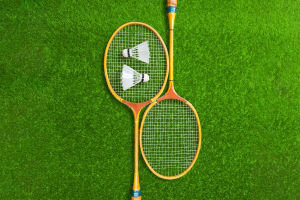Table tennis, also known as ping pong, is a popular sport that originated in England in the late 19th century. The sport gained popularity in Europe, but due to limitations of the venue and weather, college students moved the game indoors, using dining tables as tables, books as nets, and parchment as rackets to play on the dining tables.
In 1890, several British naval officers stationed in India discovered this exciting game and began playing it on a modest table. They switched to a solid rubber ball instead of a less flexible solid ball and replaced the net racket with a wooden board to play this novel "tennis game" on the table.
The first ping pong paddles were made of various materials, including parchment and a large handle, known as the "spade paddle." Later, the paddles became covered with cardboard, canvas, glass sandpaper, wood, string, or cork.
The Englishman Guede discovered a new technique to enhance his gameplay. While playing in a London table tennis tournament, he noticed that the pharmacist used a rubber racket to find the money for his customers.
This inspired Guede to glue rubber onto his racket, enabling him to have better control of the ball at the moment of contact, which helped him win many of the next table tennis tournaments.
The first general assembly of the International Table Tennis Federation was held in London, England, in December 1926.
The assembly adopted the resolution and constitution to formally establish the International Table Tennis Federation, discussed and unified the rules of table tennis, and elected Montagu of England as the first president of the Federation.
Table tennis is known for its four elements: landing point, speed, power, and spin, which make the game endlessly variable. The direction of force and timing of stance, center of gravity, arms bend, wrist, and fingers, are crucial for playing the game. These factors push table tennis to the status of king of ball sport skills.
In addition to physical benefits, table tennis provides mental health benefits. The sport requires quick reactions, sensitivity, balance, and coordination, improving the players' ability to concentrate, focus, and strategize. Moreover, playing table tennis is an excellent way to alleviate stress and anxiety, as it is a fun and fast-paced game that requires active engagement and concentration.
Playing table tennis also offers a great workout for the whole body. During an attack, players mobilize their feet, legs, waist, arms, wrists, and even fingers, in order of force, while shifting their center of gravity and controlling the shot type and swing speed. These exercises improve coordination and enhance the players' responsiveness and movement.
In today's age of industrialization and information technology, people spend a lot of time in front of computers, televisions, and cell phones.
This prolonged use can lead to eye strain, neck, and back pain. Participating in table tennis can provide a much-needed break from this type of fixed-distance eye use, which can help alleviate eye strain and other discomforts associated with prolonged computer use.
Table tennis is an enjoyable and fast-paced sport that offers many physical and mental health benefits. It improves coordination, reaction time, and concentration while providing a great workout for the whole body.
With the added benefits of stress relief and eye strain alleviation, table tennis is an excellent sport for people of all ages and skill levels to enjoy.


